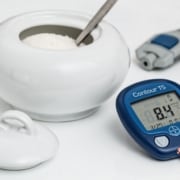The Problem
Think about being in your kitchen to make Eggs Benedict for Sunday brunch. It is an unforgiving ballet bringing the poached eggs, bacon, toasted muffin, and notoriously fickle hollandaise sauce to culinary perfection at exactly the critical final moment….exceptionally good when it works, but an ugly mess if it does not.
Now consider pulling off the same magic from the same kitchen with the same lone carton of eggs when 50 hungry neighbors drop in unexpectedly. How about 7 billion hungry neighbors? Even using paper plates and plastic forks, you have a problem with scale-up.
What is a Biological?
In the world of medicines, a Biological is a vaccine or therapeutic product whose key ingredients are produced in living organisms. Biologicals contrast with Synthetic Drugs (typically “pills”) which are manmade (synthesized) from elemental chemical ingredients using the techniques of manufacturing chemistry. Synthetic drugs are defined by composition of matter, whereas biologicals are uniquely defined by the manufacturing process. Effectively, for biologicals the process is the product, and each batch must follow the complicated recipe perfectly.
Why are Vaccines biologicals?
Vaccines work by training an immune system to recognize and attack a target pathogen, e.g., virus or bacterium, and thereby prevent infection. The immune system’s clue for recognition of the pathogen is called an “antigen” – a biochemical fragment uniquely associated with the pathogen. Years of applied research going back to Louis Pasteur’s cow pox have pointed the way to the use of biological manufacturing processes to produce these antigens…use a thief to catch a thief.
Processes
The U.S. Food and Drug Administration (FDA) publishes manufacturing regulations for drugs and biologicals. Called “Current Good Manufacturing Practices” (cGMPs), they comprise standards for things like materials, cleanliness, security, record keeping, environmental controls, activity logging and quality events. FDA cGMPs also set standards for staff qualifications, training, leadership, and management accountability. Satisfying cGMP mandates is a legal requirement for the makers of vaccines and ensures that the resulting products are as intended.
Biologicals manufacturing is almost always a batch process. Pilot manufacturing in small batches is conducted to identify the choice of materials inputs, cell lines, oxygenation levels, temperature controls, etc., necessary for making bulk vaccine substances. Pilot production is scaled-up up to larger batches for production volumes. As with the Eggs Benedict example, production level scale-up encounters practical physical constraints that limit batch size and process methods.
Because a virus is a parasite inhabiting individual cells, “cell culture” in mammalian or other animal host cells is a common method for making human vaccines. The choice of the appropriate cell “vector” for antigen production depends on genetic similarities to the human cells the virus parasite inhabits, and on the ability to manipulate cellular control processes to obtain satisfactory yields of antigen.
Very promising new vaccine technologies including so called conjugate vaccines and emerging DNA and RNA constructs are in development. These approaches all incorporate a degree of complexity in manufacture that make production scale-up easier, but still a daunting challenge.
The take-away is that vaccine product safety, efficacy and patient outcomes are directly related, and the common link is the exacting and fragile biologics manufacturing process.
Materials
To enable biological bulk antigen production, many gallons of highly specialized cell culture growth media may be required. These media are typically biological fluids or synthetic analogs. Growth media availability at scale is one of several potential supply chain choke points. Next, the cell lines engineered for antigen production need to be curated. Targeted antigens are separated out from the production broth (or “supernatant”) using specialty materials ranging from filters to highly specialized high purity “affinity” compounds.
So called formulations, fill and finish steps will all come to bear. Necessary specialized materials include stabilization and preservation additives to retard the natural decay of biomolecules; adjuvants – substances that upregulate overall immune system receptivity to vaccination; and medical grade glass vials and stoppers….more potential choke points.
Facilities
Vaccine manufacture is done in purpose-built buildings or suites housing sophisticated purpose-built equipment. Clean room facilities, environmental controls and high purity water systems are needed. Facilities and materials must be ‘aseptic’, meaning that the spaces must be protected from the introduction of unwanted viruses and bacteria. Further, the purpose-built equipment used in the production process must not react with the materials.
In certain cases, vaccine manufacturing facilities require operating licenses that are coupled with approvals for the specific vaccine product being produced at the site. Multiple sites will share designs, but each must be individually vetted and “validated”.
These are common considerations, but the dedicated engineering, equipment sourcing, construction and validation steps all take time, and scale will be a factor. Large companies can afford lean forward to develop manufacturing capacity “at risk” when product approval appears likely, but smaller companies cannot.
Distribution Logistics and Priorities
Distribution issues likely to occur include theft, diversion, counterfeit, preferential access, and third-party resale at black market prices. Of those problems, the most insidious and deeply evil may be counterfeit. Fraud in COVID-19 testing is a sorry predictor of what is possible with COVID-19 vaccination and drug therapies. Penalties criminal acts should be prescribed early, be severe and be prosecuted aggressively.
More importantly, there is no publicly disclosed management plan for the allocation of COVID-19 vaccines. Setting priorities, i.e., triage, is going to be a distasteful but unavoidable necessity. The ethics of distribution may well eclipse the mechanics of vaccine manufacture as the central issue in managing the pandemic. Setting priorities both nationally and globally seems certain to be a contentious process. Pricing and ability to pay are also compelling unavoidable issues. These are issues of conscience, ethics, policy, and politics.
One prospective COVID-19 vaccine distribution paradigm for the U.S. is control under the Defense Production Act. Given the uneven nature of critical PPE and COVID-19 testing supply distributions to date, an early, transparent, and well-understood plan seems essential to operational planning and social equity.
Conclusion
There is every reason to anticipate a COVID-19 vaccine in the mid-term future. Success in the discovery effort needs to be coupled with a rigorous effort in manufacturing scale-up. It will take more time and encounter more obstacles than anyone would like. Meeting global needs will not be instantaneous.
To paraphrase Dr. Tony Fauci: “You can’t just leap over things…”. And if you are making Eggs Benedict, I’ll be over for brunch.
Charles Grebenstein, PhD
May 6, 2020
Charles Grebenstein is a partner with Heritage Partners, a senior-level retained executive search and advisory firm serving the life sciences sector.












